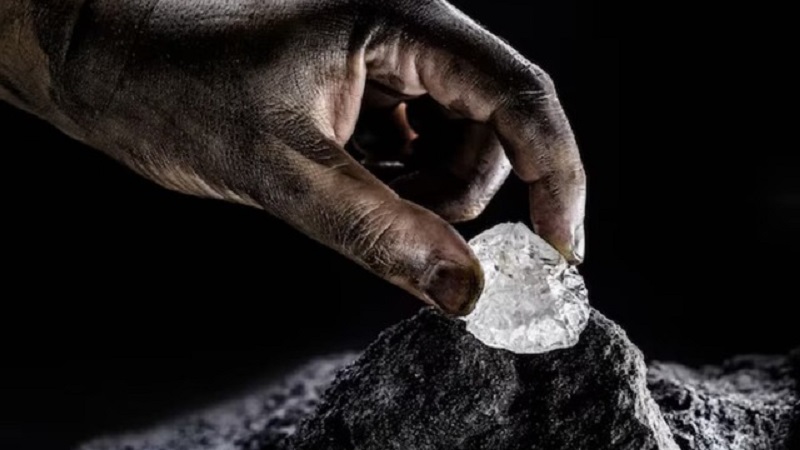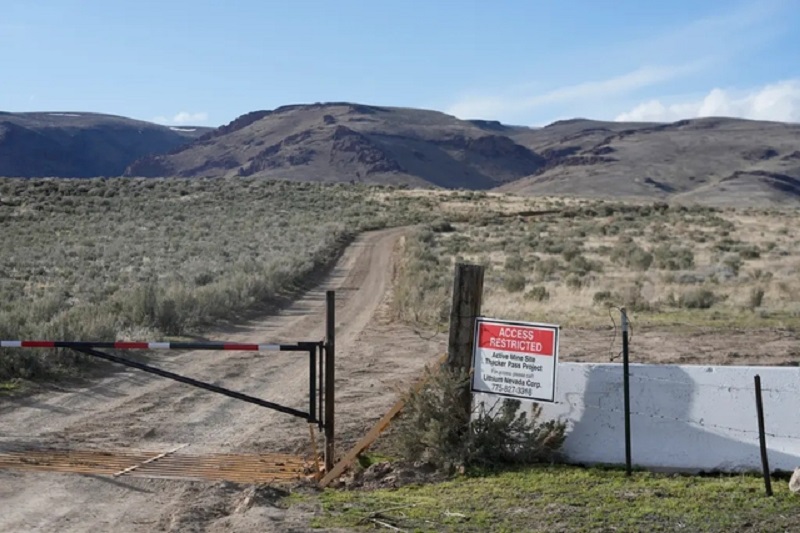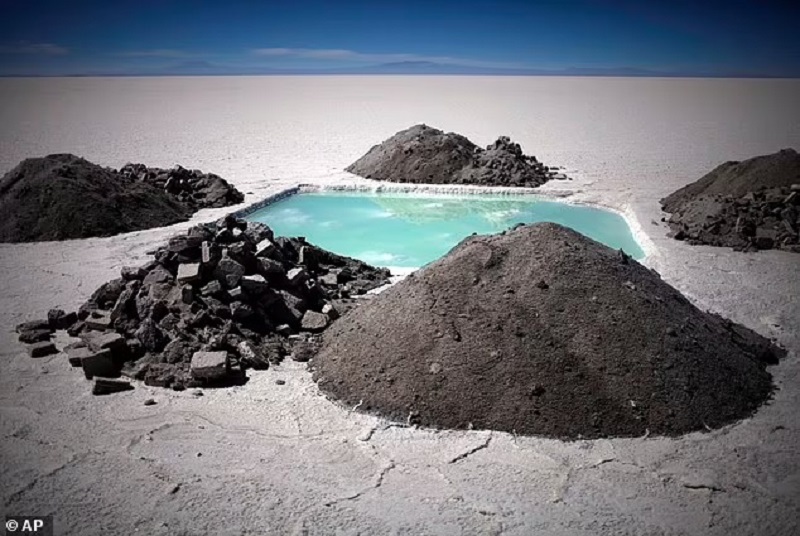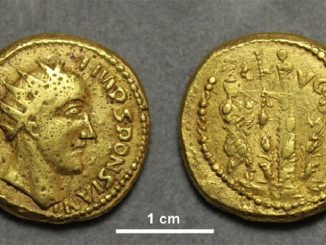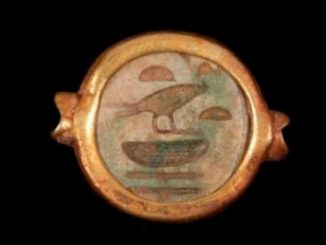The United States has just discovered the world’s largest “white gold mine” with estimated reserves of 20 – 40 million tons. The value of this “treasure” is estimated to be 1.5 trillion USD. This discovery could have a global impact.
The “white gold mine” that America recently discovered is the lithium mine in McDermitt caldera. This is a volcanic crater located on the border of Nevada and Oregon. This crater was formed about 16 million years ago.
According to experts, with estimates ranging from 20 to 40 million tons of lithium, this reserve is believed to be significantly larger than the lithium mine found beneath a salt flat in Bolivia, previously considered a valuable lithium mine. largest reserves in the world. According to market prices, this lithium mine is worth about 1.5 trillion USD.
Ms. Anouk Borst, a geologist at KU Leuven University and the Central Africa Museum in Tervuren (Belgium), said that this lithium mine could change lithium distribution globally in terms of price and security of supply. and even geopolitics. The US will have its own lithium supply and industries will be less worried about supply shortages.
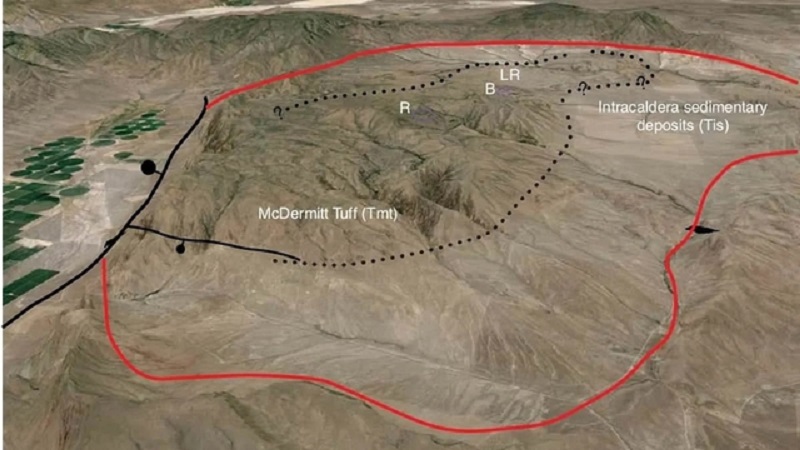
The lithium mine with the largest reserves in the world is located in the McDermitt caldera in the United States. Photo: DM
Lithium is considered an important component of Lithium batteries. These batteries power everything from smartphones to electric vehicles and solar panels. According to information from the US Geological Survey (USGS), the countries with the largest lithium reserves in the world today include Bolivia, Argentina, the US, Chile, Australia and China.
According to new on-site analysis results, an unusual shale layer made of illite mineral, containing up to 1.3 – 2.4% lithium, is in the crater. This is nearly twice the amount of lithium found in lithium-containing clay minerals such as magnesium smectite. In fact, this mineral is more common than illite.
How is a new lithium mine formed?
Finding a lithium mine with large reserves will help provide its own lithium supply. Photo: AP
In fact, some unusual conditions contributed to the formation of the new lithium mine, experts said. The crater known as McDermitt caldera appeared 16.4 million years ago when about 1,000 cubic kilometers of magma erupted outward. This crater is filled with materials ejected from magma, such as potassium, sodium, lithium, chlorine and boron. These materials quickly cool and form volcanic rocks with many fine crystals, which weather away leading to the accumulation of lithium-rich particles.
Then there was a lake formed in the crater and it existed for hundreds of thousands of years. Since then, volcanic material has also weathered around it, leading to the formation of clay deposits at the bottom of the lake. In particular, the researchers’ new analysis shows that, after this lake dried up, another eruption occurred that exposed the sediment to hot alkaline water, rich in lithium and potassium.
“Previous research has suggested that illite is ubiquitous at depth within the crater, and that it is formed when there are high temperatures and pressures,” said geologist Thomas Benson at Lithium Americas Corporation.
Experts say that the lithium mining process also needs to go through many stages. Photo: AP
However, according to new research by Thomas Benson and colleagues, hot alkaline water creates an illite layer about 40 m thick in lake sediments. Accordingly, this liquid rose through cracks that appeared when the volcano became active again and transformed smectite into illite in the southern area of the crater called Thacker Pass. The result of this process is a shale layer that contains a high percentage of lithium.
Professor of geology Christopher Henry at the University of Nevada, said the material has been described as looking a bit like potter’s clay. However, the difference is that it has too much lithium in it.
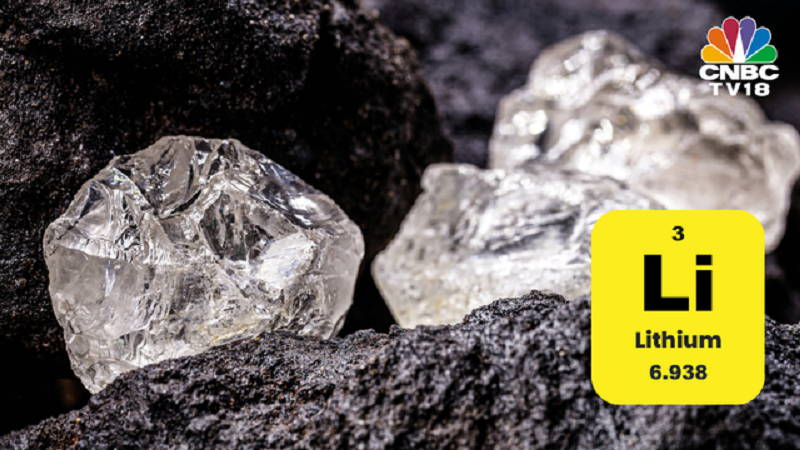
Many industries today need lithium supplies. Photo: CNBC
Geologist Benson said that his company plans to begin exploiting this lithium mine in 2026. Specifically, experts will separate clay with water and then take particles containing lithium. from larger minerals by centrifugation. Next, the clay will be soaked in a sulfuric acid tank to filter lithium.
Mr. Benson said that the lithium-rich shale at Thacker Pass is the most unique among volcanic sedimentary strata. Therefore, the discovery of lithium deposits after volcanic eruptions should focus on caldera regions, where lacustrine sediments are hydrothermally altered.
